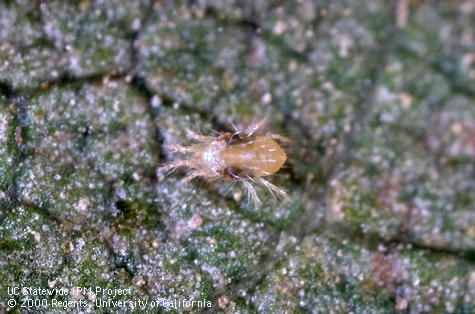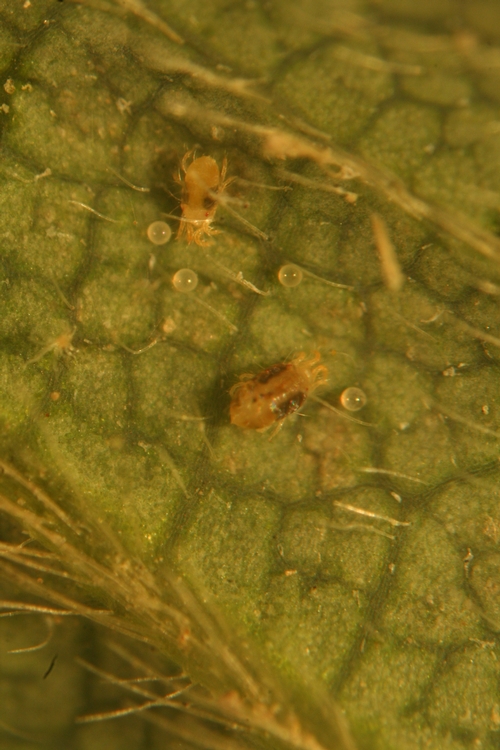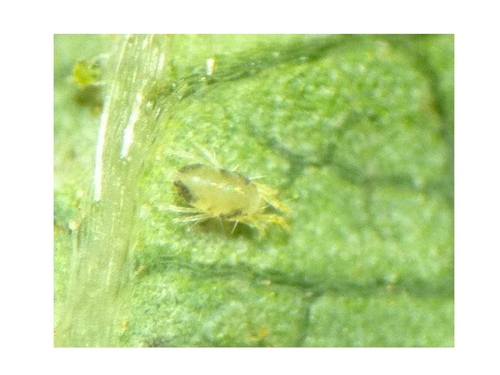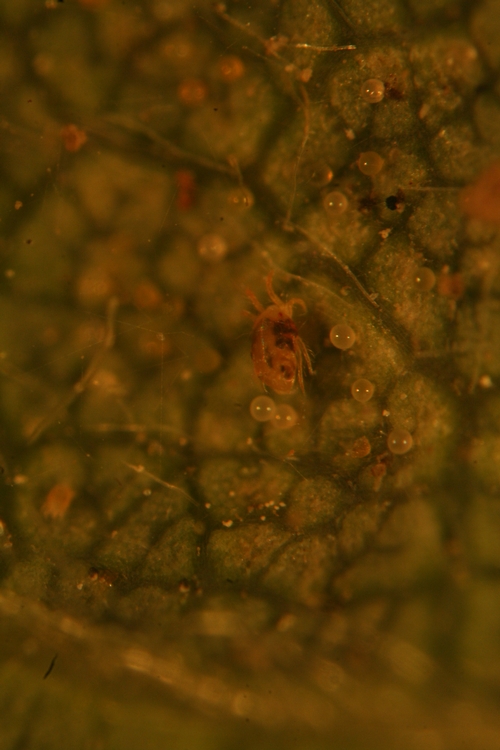A Few Pointers on Distinguishing Lewis Mite from Twospotted Spider Mite
I am currently doing a spray trial in a field ostensibly populated with both Lewis mite, Eotetranychus lewisii and twospotted spider mite, Tetranychus urticae. To boot, there's Phytoseiulus persimilis predatory mite mixed in, which people say doesn't eat much of Lewis mite.
While on the face of it, this should all be easy to sort out when counting, but it turns out that it is a bit of an art telling the Lewis mite from the twospotted, especially when it comes to the females. In turn, I contacted our expert on the matter Dr. Surendra Dara down in San Luis Obispo and he's graciously held my hand as I work through this.
See the photos below for a bit of a primer, and then also be sure to look at Surendra's excellent post on comparing Lewis mite and twospotted spider mite.
https://ucanr.edu/blogs/blogcore/postdetail.cfm?postnum=5771

UC IPM Stock photo of twospotted spider mite - spots clearly visible on either side of the body.

Twospotted spider mite female, note broken up spots that can confuse. Smaller individual mite at upper left has spots clearly defined.

Lewis mite. Note distinctive spots at back of abdomen. Photo courtesy Surendra Dara, UCCE.

Challenge question - which is it - Lewis or TSSM? Back spot clearly visible, or? Eggs surrounding the exemplar are white.


Posted by Mark Bolda on March 21, 2020 at 9:50 AM